Lynn Bottoms was born July 2, 1933 in Calgary Alberta. Lynn attended the University of Washington playing with the Huskies football team in the Pacific Coast Conference. Following graduation Lynn signed with his hometown Calgary Stampeders in 1954.
He played both offensive and defensive halfback. In his rookie year Bottoms had 379 yards rushing and caught 30 passes for another 368 yards. He also had one interception. Besides playing offense and defense, Bottoms saw action returning kicks, and was normally among the division leaders in punt returns. In that first year he won the Dr. Beattie Martin Trophy for Best Canadian Rookie in the West.
In 1955 he had 402 yards rushing to lead the Stamps. In 1956 he had 332 yards rushing. And in 1957 he had 326 yards rushing. In 1955 Lynn had 252 yards returning kickoffs, punts and missed field goals. In 1956 he had 248 yards and in 1957 he had 113 yards. He had the honour of representing the Western Canadian Football League in three Shrine All Star Games.
In 1960 Lynn was traded to the Toronto Argonauts. He played in 40 games as a defensive half plus 5 playoff games. In 1961 he had 251 yards returned on punts and kickoffs and missed field goals. In 1962 he had 319 yards. In 1963 he had 156 yards. Lynn retired after the 1963 season. Over his ten-year career with Calgary and Toronto, Lynn rushed for 1,560 yards, caught 96 passes and had 12 interceptions.
After retiring from football, Lynn and his family moved to the Cobourg area and Lynn became a welding/tech teacher at Cobourg District Collegiate East from the mid-1960s until the late 1980s. He was a much loved and respected teacher while at the school and of course, was heavily involved as a coach in their football program.
“Lynn Bottoms...he would show us video of himself when he played for the Calgary Stampeders and the Toronto Argos. He knew how to relate to the class which was made up of mostly guys that really didn't want to be in school and for the most part caused a bit of trouble whenever possible. He was tough but fair and he had our respect. He had a go kart track near Grafton and he barred me for life after I wrecked one of his karts.” (Former student on Tree52)
Lynn also became very involved in local sports, playing fastball, old timers’ hockey and golf. He had only one speed in any of his athletic endeavours - “Full Out”. He was fun to be around.
Lynn Bottoms died of a heart infection on December 22, 1995.
Lynn Bottoms was a small man by football standards but was oh so rugged, by any standard.
********************************
Memories About a Legend
I first met Lynn in January 1976 when I became Vice Principal at Cobourg East.
January is an unusual time to move into this position. September is more a reality. The staff was guarded in their welcome as they thought someone from Cobourg was going to get the position. Lynn broke the ice by coming to me at the office to welcome me and offer his support. He engaged me in his conversation and made me feel a part of the team. This was a special talent that he had. It was appreciated by me.
I recall one occasion when Lynn came into my office to say he would be late for school the next day as he had to go to the Cobourg hospital to have his big toes broken and straightened out. This was a result of pro football injuries. I could not imagine anyone even thinking about coming in to teach right after that morning procedure even if there was freezing.
I told him to take time off until the pain subsided. He would have none of that and so at about 9:15 in came Lynn with bandaged toes and slippers on, to start teaching. It was not a pretty sight but he persevered and taught for the whole day. He had immense pain tolerance!
Lynn, naturally, coached the school football team. His assistant coaches mentioned that they would be watching their players performing in the game. Not Lynn. He would be focused on the opposing team, looking for weaknesses and when he spotted one, he focused on his team exploiting it until the other team adjusted. Perhaps that is why he had great success as a coach. That, and his ability to make every player feel a vital part of the team.
Athletic banquets, at the East, were always interesting. Lynn would get as guest speakers retired Argo players like Danny Nykoluk or NHLers like Bobby Hull. These former athletes wanted to be there with Lynn.
Lynn came late to the game of hockey but that never stopped him from entering the fray full bore. He decided he needed to improve his shot so he made metal pucks and set up a plywood sheet at the shed at his home with the outline of a net and practiced his shot.
He played whatever position the team wanted him to - forward, defence or goalie. He was the heart and spirit of any team he was on. He only knew one way to play - full out and with a great big smile.
One of the staff told me of Lynn playing basketball in the town league and literally tackling the opposing player with the ball. His comment was starkly “well, he had the ball” and then, a roar of laughter!
One of the funniest memories of Lynn was his organization of having the male staff at the East attend a Blue Jay game. Lynn had an old school bus which was painted light blue and this was to be our transportation up to Toronto. Lynn had taken all the seats out and replaced them with tables and chairs so we could play cards. He also had put in a bbq with a vent coming out the back.
Most of the fellows got on board at Lynn’s home in Grafton but Lynn said he would pick me up at my house. Being new to the staff I had no concept about the bus but assumed it was a coach. When it arrived in front of our house on Hamilton Ave our four young children and Suzanne came to the door to see us off. Lynn, in the driver’s seat, opened the school bus door and waved at me to get on board. My son John said to Suzanne “look mom at all the beer cases beside the bus driver! “
Anyways, off we went to the game, playing cards and hoping Lynn did not have to apply the brakes too harshly. There were problems with the motor but nothing major. Upon arriving at the stadium parking lot, on came the bbq and we feasted on hamburgers, etc. I am not sure if the Blue Jays won but after the game off we went up the Don Valley Expressway.
Halfway up, the motor conked out and there we were in the right lane, stalled! Cars were swerving around us and, thankfully a Toronto police cruiser arrived to assist us. By this time Lynn had the hood up and with the assistance of others was trying to unclog the gas line. The police officer said he would put flares out on the DVP to save us from a rear-ender. He risked his life setting them out.
Little did he know that Lynn had fixed the problem and had started driving away. We looked out the back window to see the officer fading in the distance, looking up at us and bolting to his car. When he caught up to us with all his lights glowing, he was not happy and told us so in no uncertain words and to get the bus off the DVP ASAP. We approached the Don Mills exit and Lynn said “Everyone out and push”. We finally got to a garage, got the bus fixed and arrived back in Cobourg very late but safe!
On another occasion, Lynn invited all the male staff out to his house for cards, etc. We were having a great time but as eleven o’clock came we were getting ready to call it a night. It was then that Lynn announced that he had flood lights in the back yard and we were going to finish off the evening with a touch football game. Needless to say, Lynn’s idea of touch was different than most. It was well after twelve that the game gratefully ended.
I am sure there are literally hundreds of other funny tales that others could tell. There are probably many stories of how he helped kids at school. He was loved by all. He was someone you were lucky to know. He was kind, he was generous of thought and deed. He knew only one way to tackle life - full on and with abandonment. He was a LEGEND!
by Peter Delanty
**************************
Just a Couple of Many Fond Memories
One summer evening I got a phone call from Lynn Bottoms asking if I would like to play 9 holes of golf the next morning. I told him I was sorry but I had to work the next morning. He replied “So do I.”
“Well” I asked, “how are we going to play 9 holes of golf and still get to work on time?” “That’s easy” he replied, “Just bring 4 clubs – a driver, a couple of irons and a putter. We’ll each hit 2 balls and then run down the fairway to our respective balls, hit them again and then run again.”
We proceeded to do this for every hole on the old 9 hole golf course at the corner of Division and Elgin Streets. We started at 6:00 am and were finished at about 7:20 am. There was time to go home, have a shower and off to work on time.
There was only one “Bot”. He was an absolute bundle of energy and so much fun to be around.
*************
This story also took place in the warmer months. We had a fastball team that played in Grafton. There were a few Cobourg guys but it was mostly made up of Grafton players such as Tony Beauchamp, John Eagleson, Jim Helps, Mike and Rick Hall and others. One of the unique customs of the team was to return to different homes after each game to sip a few coolies and partake in some fun stuff like horseshoes, swimming, etc.
Well, the night we went to Lynn’s house he had 2 basketball nets set up and we picked teams for a little competition. Well into the wee hours of the morning Len “Pancho” Bazay drove to the basket for a layup. Lynn being Lynn went up aggressively to block him. Pancho’s head caught Lynn right on the cheekbone and badly cut him. Game over?? No way!! “Bot” went into the house and found a large box of gauze. We wrapped it around his head several times and then held it in place with electrical tape. The game went on for another hour or so. Everyone went home. The “Bot” went to the hospital, got 8 stitches in his cheek and then went off to teach his classes. What a man!! And as tough as they come!!
by Ross Quigley
**********************************
Lynn Bottoms - One Of A Kind
December 9, 1996 in Cobourg Daily Star
I wrote this article a few days after Lynn Bottoms’ death on December 22nd, 1995, and just filed it away. But a year has passed and, as we approach the first anniversary of his passing, please consider this my memorial tribute to a unique character and a devoted lover of life.
Many of you knew Lynn Bottoms much better than I. But I’ll wager that few knew him any longer.
I first met Lynn in the early ‘60s when he was an MBA student at the U of T and a Toronto Argonauts star. Within minutes of our introduction, I knew instinctively that this was one warm and affable human being – entirely devoid of pretension. A first impression that endured.
In those early years, I was often a fourth for euchre in the little semi in west Toronto that the young Bottoms family called home. I remember Lynn’s endless energy and how mere mortals were cajoled into playing long after any reasonable person would succumb to fatigue.
Lynn was of average stature – but ox strong. I’ll never forget the arm wrestle to the finish - a brief break in one of those interminable euchre tournaments. Bottles and playing cards flew in all directions. It ended when Lynn’s adversary extricated his hand from the death grip to display an oddly contorted, less-than-mint-condition index finger. No matter. A mere diversion. The cards continued until first light.
Shortly after that, Lynn retired from football and moved to Cobourg. A couple of months later, three of his “old buddies” visited for a weekend and a little R and R. Some R and R! By contrast, the Ironman Triathlon is for sissies.
We went almost nonstop for the entire time. From one athletic competition to another. Touch football, two on two basketball, ball hockey, baseball.
Then the cycle would repeat itself again and again. Of course, Lynn would let us do just well enough to save face, but it was obvious who the real athlete was.
After dark – euchre, euchre, euchre. Finally – sleep. But scarcely had we closed our eyes when daylight and Lynn returned. Raring to go.
Some of you may remember the old go-cart track which once occupied the field opposite Lynn’s house on Highway 2 east of town. Sunday morning business at the track was slow and Lynn decided that this would be a fine opportunity to take on the little old lady who ran the place.
He rode his dirt bike across the road and issued the challenge. I will always remember the sight of that grandmother in her cart and Lynn on his bike, neck and neck, careening wildly around the track. And the sound of Lynn’s maniacal laughter audible above the roar of the air-cooled engines. That was the last I was to see of Lynn for years.
In the mid “70s, I moved to this area and renewed my acquaintanceship with Lynn. But we usually only crossed paths on the street or at some education-related function. Still, he remained the same gregarious, ebullient character I had met years earlier. He never knew how to be unfriendly or how to slow down.
About 15 months ago, Lynn had his first brush with illness. When I last saw him back in June, he looked great. I wondered if anyone had ever been less compromised by heart problems. But now he is gone. It is hard to believe that this incredible bundle of energy will never play another game of old-timer hockey, laugh madly at some crazy prank or crush my hand in an enthusiastic greeting.
We can be sure of one thing though. If a zest for life and a love of people count for anything, Lynn Bottoms is sitting up on a cloud at this very moment – a big smile on that broad face of his as he plans his next game of five-a-side football. And once the whistle blows, even the angels had better keep their heads up.
by George Smith
Reviewed August 2020
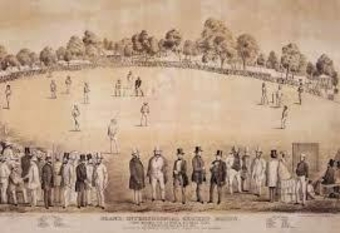

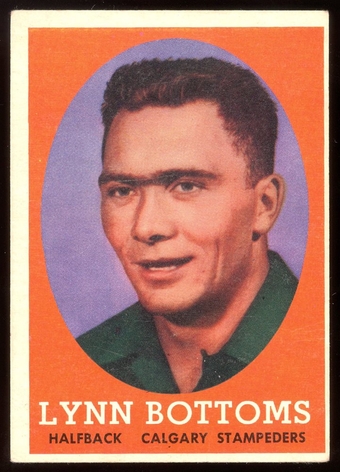
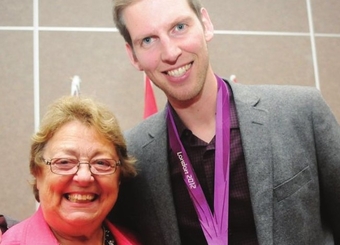
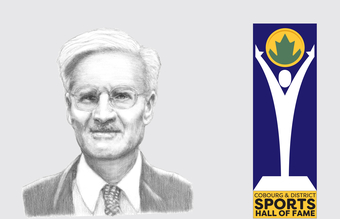
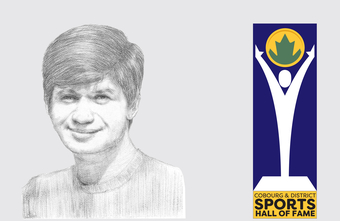
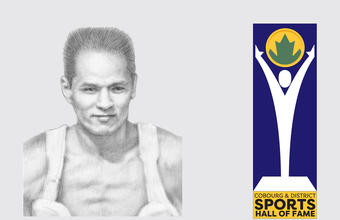


Cricket News
Do you have a regular newsletter? Curious and would like to support. Doug